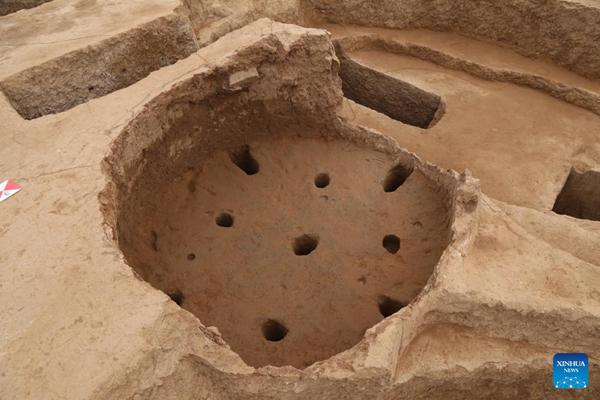
The ruins of a village dating back to more than 3,000 years have been found in north China's Hebei Province, according to local archaeologists.

placement="bottom" trigger="hover focus" html="true" data-original-title="This photo taken on April 6, 2022 shows a pottery kiln unearthed from the ruins of a village dating back to more than 3,000 years in the current Zhaoyao Village of Wu'an City, north China's Hebei Province. (Xinhua)"/>
The village, in the current Zhaoyao Village of Wu'an City covers about 220,000 square meters. It was built in the mid-Shang Dynasty (1600-1046 B.C.). In the medium-sized village, archaeologists have found the ruins of roads, trenches, pottery kilns, waterways, cellars and rows of houses.
They have also unearthed ceramics, potteries, bone-carved hair pins and tortoise shell pieces used for divination. In addition, a heating system was found inside each of the houses, which was believed to be a prototype of the traditional Chinese kang, or heatable adobe sleeping platform.
The village was discovered while archaeologists were carrying out excavation work at the Zhaoyao Ruins between 2020 and 2022. According to Wei Shuguang, head of the archaeological research department of Shang and Zhou Dynasties in the Hebei Provincial Institute of Cultural Relics and Archaeology, the village might have been the capital of a tribe or kingdom at the time.
Wei noted that the layout of the village ruins was reasonable, while the heating system could help researchers understand the changes in the environment in the mid-Shang Dynasty as well as the measures taken in north China to help keep warm.
